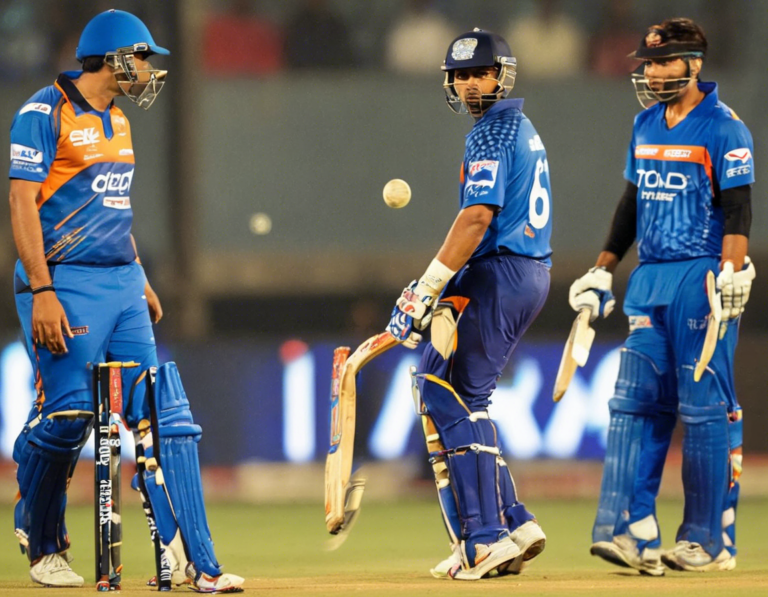
As a cricket enthusiast, staying updated with the latest scores and match statistics is paramount. When it comes to high-octane clashes like Hyderabad vs Mumbai, the excitement levels are always through the roof. The scorecard for such matches serves as a comprehensive source of information, encapsulating the performance of individual players, team totals, milestones achieved, and various other key aspects that influence the outcome of the game.
Understanding the Scorecard
A cricket scorecard is a structured presentation of the data from a cricket match, typically displayed on a sheet or electronic device. It provides a detailed account of each team’s innings, including runs scored, wickets taken, overs bowled, partnerships formed, and other notable occurrences during the game. Let’s break down the key components of a scorecard:
1. Team Information:
– Team Names: Hyderabad vs Mumbai
– Match Format: T20, ODI, Test
– Venue: Location where the match is being played
– Date: Date of the match
– Toss: Which team won the toss and chose to bat or field
2. Innings Details:
– Batting Team: The team that is currently batting
– Bowling Team: The team that is currently bowling
– Total Runs: The total runs scored by the batting team
– Total Wickets: The total number of wickets lost by the batting team
– Overs: The number of overs bowled by the bowling team
3. Individual Player Performance:
– Batsmen: List of batsmen, their runs scored, and how they were dismissed
– Bowlers: List of bowlers, their overs bowled, runs conceded, wickets taken
4. Partnership Details:
– Partnership: Runs scored and balls faced by each pair of batsmen
– Fall of Wickets: Sequence in which wickets fell and the runs scored at that point
5. Extras and Bonus Points:
– Any additional runs scored through wides, no-balls, byes, or leg-byes
– Bonus points awarded under specific tournament rules
6. Match Summary:
– The overall result of the match – win, loss, or draw
– Player of the Match
– Important highlights and milestones achieved during the game
Importance of Scorecards
Cricket scorecards play a crucial role in capturing the essence of a match. They provide a detailed record of each player’s performance and the overall flow of the game. From analyzing batting and bowling patterns to identifying key strengths and weaknesses of a team, scorecards offer valuable insights for players, coaches, selectors, and fans alike.
Tips for Reading a Scorecard
For those new to cricket or scoring, interpreting a scorecard may seem daunting initially. Here are some tips to help you navigate through a scorecard effectively:
-
Focus on the Basics: Start by understanding the total runs scored, wickets taken, and the current partnership. This will give you a bird’s eye view of the team’s performance.
-
Player Contributions: Look at how each batsman performed – their individual scores, strike rates, and how they got out. Similarly, analyze the bowling figures to gauge the effectiveness of the bowlers.
-
Partnerships and Fall of Wickets: Pay attention to the partnerships formed between batsmen and the sequence in which wickets fell. This can provide insights into the team’s stability and momentum.
-
Extras: Don’t overlook the extras column, as they can impact the game significantly, especially in tight matches.
-
Match Context: Consider the match situation while analyzing the scorecard. Factors like pitch conditions, target set, and required run rate can influence a team’s strategy.
FAQs (Frequently Asked Questions)
- What is the difference between a live scorecard and post-match scorecard?
-
A live scorecard provides real-time updates during the match, while a post-match scorecard summarizes the outcome and statistics after the game.
-
How often are scorecards updated during a match?
-
Live scorecards are updated ball by ball, reflecting the latest happenings on the field.
-
Can we access old scorecards of past matches?
-
Yes, scorecards of previous matches are archived and can be accessed on various cricket websites and databases.
-
Are there different formats of scorecards for T20s, ODIs, and Tests?
-
While the basic layout remains similar, certain formats may vary to accommodate specific rules and regulations of each format.
-
Do scorecards include fielding statistics as well?
-
Yes, modern scorecards often include fielding statistics such as catches, run-outs, and stumpings along with batting and bowling figures.
-
What is the significance of Duckworth-Lewis method in limited-overs matches?
-
The Duckworth-Lewis method is used to adjust the target in rain-affected matches based on the resources available to the chasing team.
-
How are player of the match and series determined based on the scorecard?
- Player of the match and series awards are typically given to individuals who exhibit exceptional performance based on their contributions to the game as reflected in the scorecard.
Cricket scorecards are not just statistical records but windows that offer insights into the ebb and flow of a game. Whether you are a player looking to assess your performance, a coach strategizing for the next game, or a fan reliving the excitement of a thrilling encounter, scorecards are invaluable tools that enhance the cricketing experience. So, the next time you watch a Hyderabad vs Mumbai cricket match, dive into the scorecard to unravel the story of the game, ball by ball.